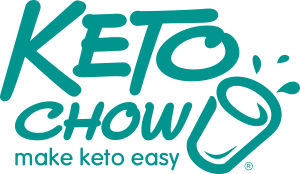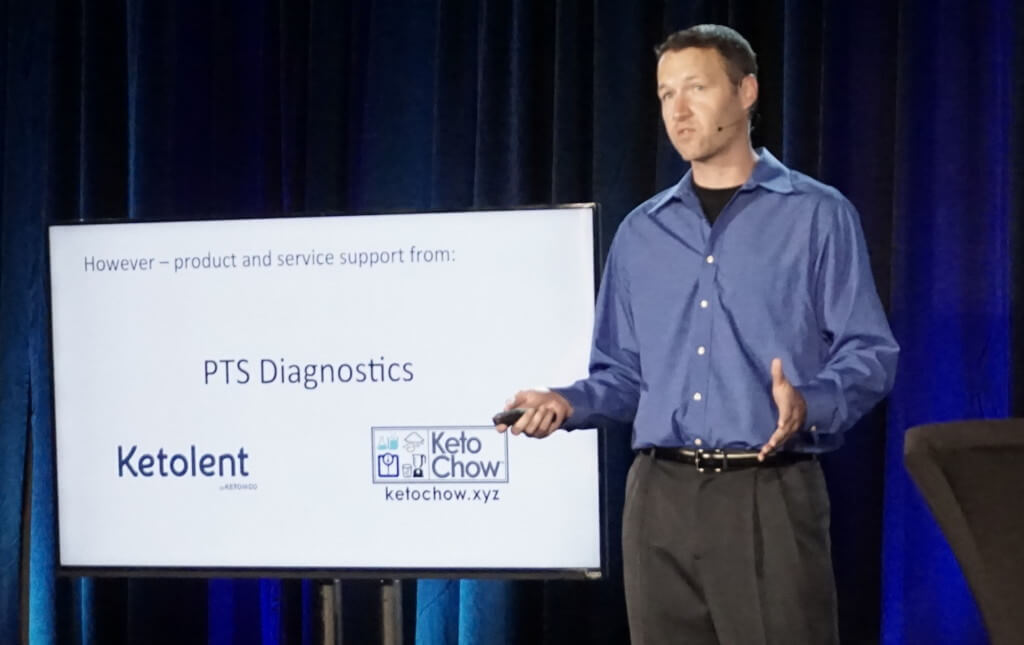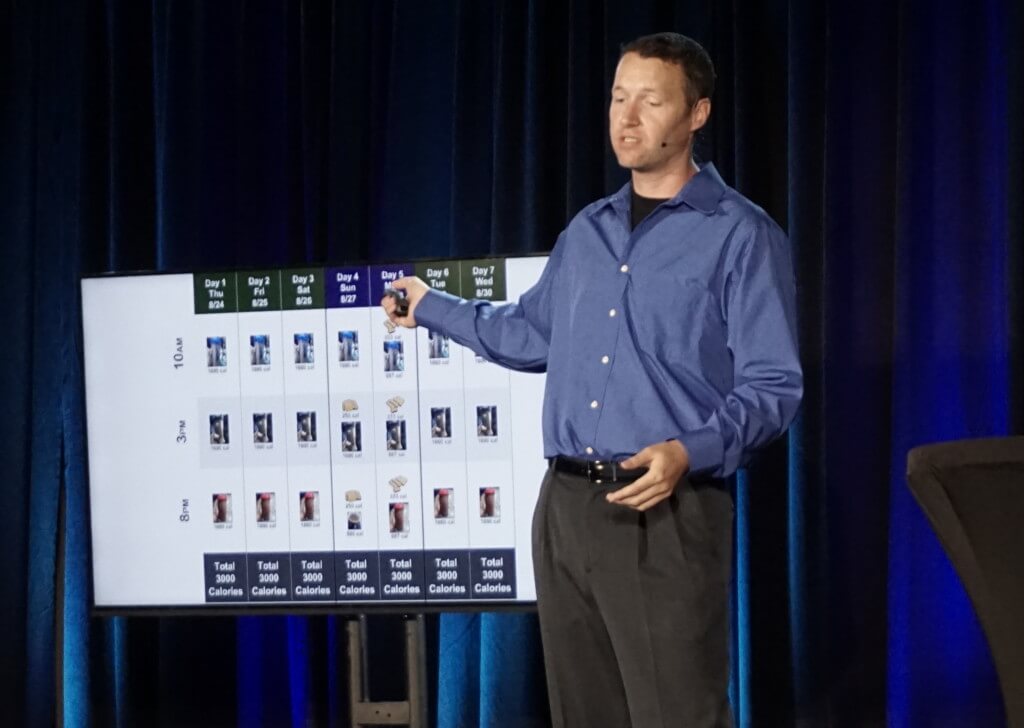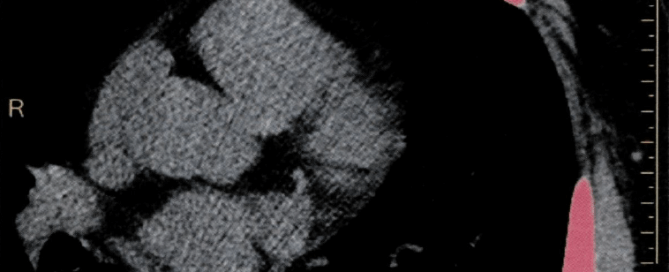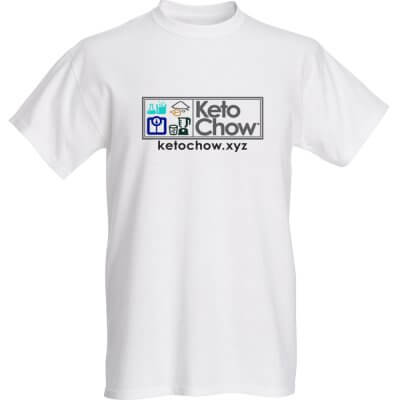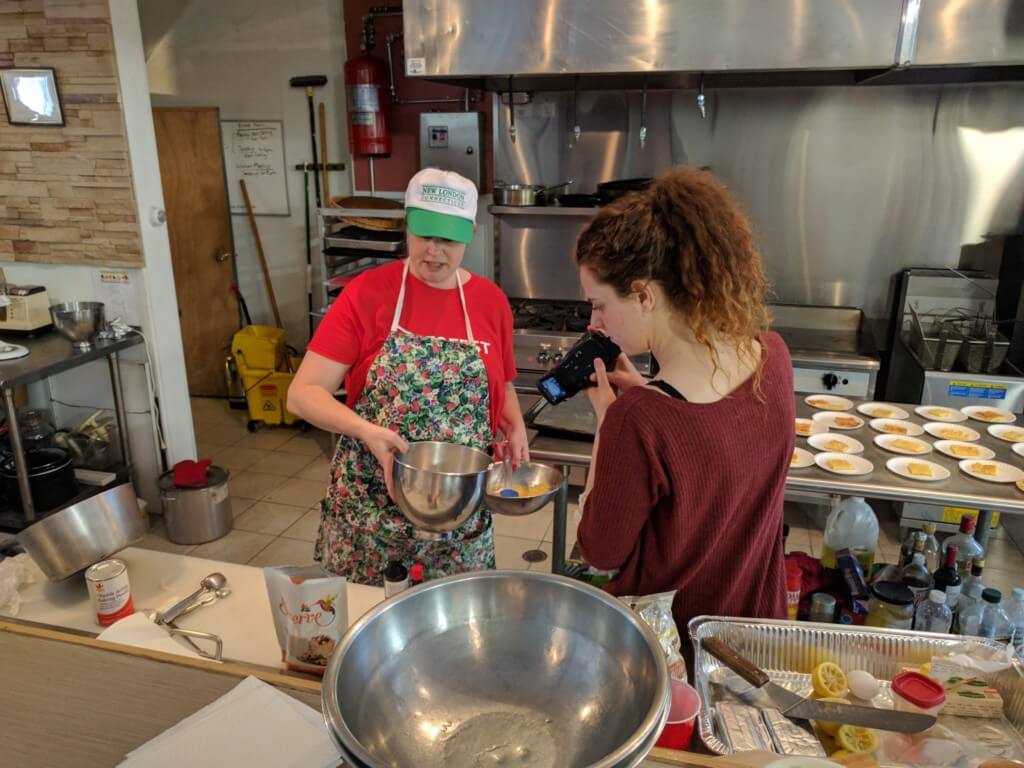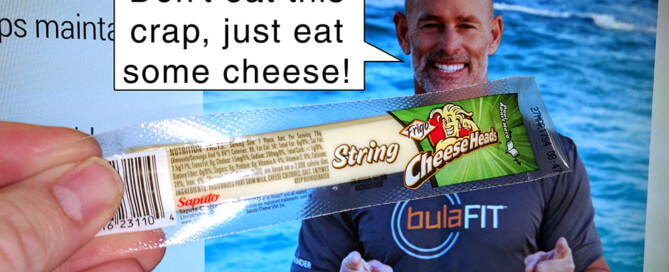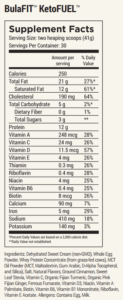N=me experiment: 4 weeks of *ONLY* Keto Chow – 1st week tests back
Way TL;DR: eating only Keto Chow & drinking only water for a week and a half has brought down my fasting insulin to 3.7 μIU/mL and raised my ketones to 3.2 mmol/L. I’ve also lost 9.2lbs but that’s not on the graphs below.
On October 22nd, 2017 (3 years and 2 days after I started Keto) I began an experiment: I was going to ONLY eat Keto Chow for 4 weeks and see what it did to some blood tests. Today I received my first blood test after starting the experiment. I took a baseline test before starting to establish a control to compare against. Leading up to “test 0” I was very much eating keto (and consuming Keto Chow 1-2 times a day) but I was not actively tracking my carb intake. Most (including me) would likely call it “lazy keto” – I know from my own experience that if I do strict keto and write down everything I eat BEFORE I eat it, I’ll invariably get on track and lose weight. But with this experiment, I wanted to go for the nuclear option: absolutely no food except Keto Chow. No drinks except water. No treats. No snacks. No confounding variables.
This would also serve another purpose in allowing me to do a validation test on the upcoming Keto Chow 2.1. I like to have absolute confidence in my product and this is a great way to do it. For the most part, the recipe for 2.1 is the same with some notable differences:
- Switching from whey protein isolate to milk protein isolate [see footnote 1]
- Switching the form of Selenium, this change removes a weird smell that goes away after a few minutes. Functionally it’s the same but I like the way it smells and tastes better.
- One flavor (Natural Strawberry) will be available sweetened with Monk Fruit instead of Sucralose [see footnote 2], another flavor (Savory Chicken Soup)… well it’s savory and doesn’t need a sweetener.
- A bunch of new flavors are coming, though that doesn’t affect the nutrition.
- If I can pull it off: we’ll be switching all the magnesium from citrate over to malate.
- We’re officially recommending using avocado oil as an alternative if you don’t want to use heavy cream (I still primarily use heavy cream).
In the same spirit of open data that Dave Feldman uses in his experiments – I’m publishing the complete blood test results from my experiment. You can view the blood results on this online spreadsheet. Currently, there are only two entries – more will come, there’s a 5-6 day lag between the test and me getting it. I’m also going to be posting my complete Cron-O-Meter logs so you can see exactly what the input variables were. Here are the first 11 days so far. I also did a test on my second day where I tested postprandial glucose while drinking Keto Chow.
So, how’s it coming along so far? The most obvious change I’m seeing is my blood ketone level which has gone from 0.4 to 3.2 mmol/L (I measure each night just after I brush my teeth – measuring in the morning is a bad idea). That rise makes sense since I’m getting exactly 10.54g of non-fiber carbohydrates per day. My fasting insulin has also gone down from 6.7 to 3.7 μIU/mL. I asked Dave Feldman about the results so far, he said: “The insulin change actually looks even more interesting in the context of everything else being practically the same (including lipids!)” – I’m going to try to get Dave to do a written analysis of all this at the end of the experiment, he’ll probably do one anyway because he LOVES DATA! My small LDL-P has gone down by half, which is also interesting. Personally, I’m not concerned at all about my lipid panel because I do not believe that high cholesterol (or more properly: Elevated Lipoprotein) is something bad. Dave uses a really great analogy about lifeboats on cruise ships… hang on, I’ll just let Dave explain:
OK, that’s the blood part of my experiment. How has the experience been so far?
Before I started this, I was doing Keto Chow for at least 2 of my meals on most days, you’d think that going 100% wouldn’t be a big change but it seems to be. Maybe it’s all the ancillary things I also eliminated like sugar-free gum, diet soda, and anything else that wasn’t Keto Chow and water. Warning, poop talk ahead. First thing I noticed was Bristol type 7 stool, don’t worry though I took a probiotic and it went over to a 4. After a few days, as all traces of other food left my system it’s settled on a 5. I think this is due to everything getting digested and metabolized except for the acacia gum – and that gets metabolized by my gut bacteria into short-chain fatty acids (bonus fat!). The volume has gone down significantly. I’m still regular, there just isn’t that much there. OK, done with poop talk.
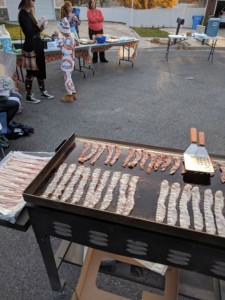 Not chewing anything anymore has also been very interesting. I think I need to drink more water – I keep getting a sort of film on my teeth. A quick swish of water in my mouth removes the film but it eventually comes back. I don’t think this would be a problem if I was chewing gum – but I wanted to eliminate ALL variables, including other non-nutritive sweeteners. Maybe I could find some unflavored and unsweetened gum…
Not chewing anything anymore has also been very interesting. I think I need to drink more water – I keep getting a sort of film on my teeth. A quick swish of water in my mouth removes the film but it eventually comes back. I don’t think this would be a problem if I was chewing gum – but I wanted to eliminate ALL variables, including other non-nutritive sweeteners. Maybe I could find some unflavored and unsweetened gum…
Another interesting thing is the “no thanks, I’m just drinking this for now” aspect in social situations. I used to think politely declining carbage was an issue doing Keto. Man – that’s NOTHING compared to trying not to have to explain why I’m not eating bacon right now. For Halloween, we have a yearly neighborhood potluck. I mentioned to my kids a month ago that I could just wheel down the griddle and cook bacon (not thinking that it was SMACK in the middle of my experiment). They ultimately convinced me to do it – I cooked 10lbs of bacon, it was all eaten. Just not by me. Dinner with the family is also kinda weird. I’m cooking food that I’m not going to eat all the time.
Next week will be especially interesting as I’ll be at a tech conference in San Francisco without refrigeration. I have a solid game plan to cope but it’ll be a lot of work.
So. There you go. I have test #2 tomorrow, we’ll see what further changes come! (Test #4 will be a comprehensive test just like #0 instead of the subset I’m doing for 1-3)
[Footnote 1] So what’s the deal with Milk Protein Isolate (hereafter “MPI”) compared to Whey Protein Isolate (hereafter “WPI”)? MPI has a bunch of advantages over WPI and overall is simply a better product to use. I actually tried to get MPI back when I first started doing Keto Chow but nobody would take me seriously – they do now =). Advantages: first and foremost, MPI is the protein from milk, isolated out – this means the protein is in the same ratio as milk: 80% casein 20% whey. Casein is slower digesting, for bodybuilders that just finished a big workout that may not be optimal – but for people on a ketogenic diet, it means you will likely have a much smaller insulin response. WPI is a byproduct of the cheese making process, the supply goes up and down with the demand for cheese. MPI is a primary product, so the supply is consistent and reliable. It’s also coming from Idaho which makes for awesome lead times getting to Utah. MPI also contains a significant amount of calcium and phosphorus in extremely bioavailable forms, this allowed me to kill Calcium Phosphate from the ingredients. Overall, MPI is a slam dunk!
[Footnote 2] Monk Fruit and “natural” sweeteners. For some people, the sucralose we use in most of the flavors of Keto Chow is the end of the world… ok not really =) but many people do want to avoid sucralose completely. Some rat studies (note: humans are not rodents – it’s true, look it up) have indicated sucralose may cause changes to gut bacteria composition. We will be using 80mg of pure sucralose per meal in Keto Chow 2.1 (20% less than 2.0, that’s 0.08g – or 62.5 meals worth is the weight of a US nickel) with the exception of 2 flavors: Savory Chicken Soup and Natural Strawberry – the savory flavor won’t have any sweetener and the Strawberry will be using Monk Fruit extract. I tested Stevia instead of Monk Fruit and the taste wasn’t very good. I also tested Erythritol and blends of Stevia, Monk Fruit, and Erythritol – problem with those was the mass. To get the right sweetness we needed to use 43g of erythritol. That change would nearly double the weight of Keto Chow. No way man! I was toying with making all the flavors of Keto Chow with Monk Fruit but taste tests with people that aren’t me, along with surveys of our customers indicated that wasn’t a good idea (especially since Monk Fruit + Chocolate tasted REALLY weird). I still wanted to have a non-sucralose option available for those that wanted the option. Monk Fruit lends its self well to fruity flavors so we decided to have an additional “Natural Strawberry” flavor.

